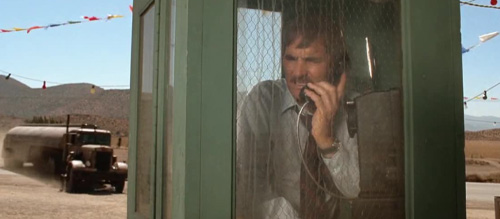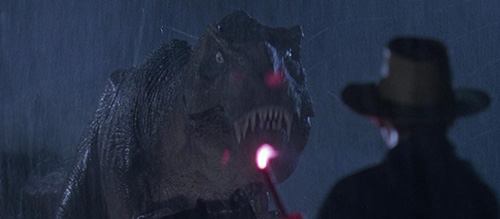Where to Start with Steven Spielberg
When someone asks ‘where should I start with the films of Steven Spielberg?’, the realistic answer could be ‘anywhere you want.’ There aren’t that many people who can realistically claim to have changed the entire landscape of cinema, at least when we think of mainstream western narrative cinema, but Spielberg is certainly one of them.
Hailing from Ohio and growing up in Phoenix, Arizona, Steven Spielberg went to California to study filmmaking. After a brief stint learning his directing ways through TV episodes, he slowly made his break into feature films, much of this off the strength of a 30-minute short film he made whilst studying. That film, Amblin, would become his calling card, and his film production company would later be named Amblin after the film which started it all off.
Once in the world of features, Spielberg went about carving out his face on the Mount Rushmore of cinematic greats. Practically cementing the idea of the modern cinematic blockbuster in 1975 with Jaws, he dipped into almost every genre imaginable, from horror to science-fiction to fantasy. The musical, the wartime comedy, the political thriller, the historical epic, the romance; all would come under Spielberg’s gaze in the following period of over fifty years, and he shows no sign of stopping.
Steven Spielberg has directed 35 feature films to date, produced and been executive producer on dozens more, and is one of, if not the, most commercially successful director of all time. And yet, despite all this glory and success and longevity, like any talent at the upper echelons of their craft, Spielberg still manages to maintain key concepts, ideas, themes, styles and principles throughout his work, even as he evolves throughout the years.
Choosing just three films for suggestion is tricky, as it could easily be any of a good 80% of his oeuvre (some, such as 1941, admittedly, are the very rare duds in a stellar roster). These selections are not all his most successful films, they are not all those that went and swept the Oscars – they are peak examples of different facets of Spielberg’s style, his process, his development. They aim to give a rounded appreciation of the great director’s work, a larger insight into his filmmaking, to provide multiple ways in. As Spielberg himself once said, he ‘dreams for a living.’ Here, therefore, are three of his best and most intriguing dreams for you to follow him into neverland. This is Where to Start with Steven Spielberg.
1. Duel (1971)

In 1971, off the back of some work on television, Universal hired a young Steven Spielberg to adapt a story by Richard Matheson (the novelist responsible for “I Am Legend”, “The Shrinking Man”, and others) about a man harassed by a massive truck trying to kill him. It was to be shown on TV, as part of their series of original films for Saturday nights. Here was the chance for a young man to prove himself – his third ‘feature’ as it was – after a mostly missing film from 1964 titled Firelight made when he was 17 with the help of his high school, and a feature-length episode of ‘The Name of the Game’. This was a commissioned feature, with a professional crew under his control. This was the big break.
With a gruelling, impossible schedule (they had under two weeks to shoot the entire film; something Spielberg and all the crew knew was impossible, but Universal gave them anyway), they set to work crafting a remarkably well-honed thriller that was simple, stripped back, and which still holds up to this day. With veteran Dennis Weaver in the lead, Spielberg manages to keep the tension up for seventy straight minutes, each of us along for the ride with poor David Mann for every dusty mile, even despite the tensions behind the scenes.
Spielberg draws on one of his directing heroes, Alfred Hitchcock, to keep the whole scenario simple but disturbing. Never allowing us to see the driver of the famous grimy truck, never giving us an explanation for it all, the Semi itself becomes the monster, the weapon, the object of fear. It is in this film that Spielberg shows his already firm handling of tension and suspense, an element of his style that will be present not only in films such as Jaws (which he admitted owed a directing debt to Hitchcock; when their animatronic shark kept malfunctioning, he asked himself what Hitch would do, and decided that he would hardly show the shark at all, just as he had never shown the driver of the truck four years earlier), but in family films like E.T. the Extra-Terrestrial and The BFG, and even in his romantic fantasy Always.
Duel is the prime showcase for where young Spielberg would go, his mastery of editing and camerawork. Here is where the foundations were laid, where his promise and genius were shown to the world, and it is still a damn good thrill ride from beginning to end.
2. Jurassic Park (1993)

Jurassic Park/World Movies Ranked
In 1975, Steven Spielberg defined the modern blockbuster with Jaws. He would go on to continuously build upon this with films such as Close Encounters of the Third Kind, E.T., and the Indiana Jones trilogy. When Hook was released in 1991 to mixed reviews, one could almost imagine that the past fifteen years or so had exhausted his powers. Perhaps they were on the wane, the overblown genre blockbuster now having the baton grasped from Steven’s hands.
Oh, how they were wrong.
Adapting the Michael Crichton novel of the same name, and teaming up once again with composer John Williams (their 12th collaboration), Spielberg opens the gates to a place beyond imagination; a theme park on a remote island inhabited by revived dinosaurs. Here’s the diplodocus and the brachiosaurus, and somewhere around there is that most feared of beasts, the Tyrannosaurus Rex.
Jurassic Park became the highest-grossing film of all time when it was released, and for good reason. The effects are stunningly realised, both CGI and practical. The music is gorgeous, the acting perfect, the cinematography outstanding. The film manages to wrap you up in an overwhelming sense of wonder in one moment, then have one on the edge of the seat the next. One second you laugh, the next you cry, the following you scream. It focuses, for much of its runtime, on the children of the film – how they see and react to the world, the innocence that they feel – and their terror being reflected in us. Their awe and fear is ours, too.
And yet, despite his prior decade or so being so often of the world of the big-budget family film, Spielberg hasn’t lost any of those powers for creating suspense and tension. One of the most famous shots in the film is a simple closeup of a cup of water on a car dashboard, ripples across the surface of the water getting bigger and bigger as something comes towards us. It takes a special talent for one of the most iconic moments in the most commercially successful film of all time (at the time) to be a shot of some plastic cups. This is his power. When he has the opportunity, he cuts through the dialogue and the babble to get to the instinctual, because it doesn’t matter if you’re seven or seventy; you see that water shaking, you know it’s not good.
3. Minority Report (2002)

There came a point near the end of the 20th century when Spielberg transitioned, ever so slightly, to more serious, introspective films. That isn’t to say he hadn’t done them before, for example with The Color Purple in 1985, and Schindler’s List in 1993. And he didn’t abandon his child-like innocence completely; the childhood motif that he had become most famous for in the 80s was still present in films such as The BFG and Ready Player One will attest to. But throughout the nineties he slowly seemed to shift to somewhat darker, more contemplative films. Amistad and Saving Private Ryan certainly took a look at one or two characters more than other films had done before, turning to the dark part of humanity to try and find some glory. Even AI: Artificial Intelligence, despite focusing on a robot child, was much darker than his other child-centric films; although, it being a halted project by his mentor Stanley Kubrick, which he filmed in his honour, probably had something to do with this tone.
With Minority Report, the 2002 adaptation of Philip K. Dick’s novella, Spielberg combines this darker look at humanity with the blockbuster visuals of the genre pictures of his most famous era, applying the hitchcockian man-on-the-run suspense theme to create a reinvented Spielberg for the 21st century. In a cyberpunk future, with Tom Cruise’s Anderton on the run to escape police trying to arrest him for a crime he is predicted to commit in the future, Spielberg puts all his cards on the table.
There’s the suspense he was known for, sequences of hiding and chasing and cross-cutting for maximum breathlessness, getting the audience to grip the edges of their seats. We have the astonishing visuals and grand scale seen in such sequences as the vertical car case, helped by rapidly advancing GCI technology, and the shiny lens flares that would become part of his standard look in upcoming films (see Ready Player One, West Side Story, The War of the Worlds; even Lincoln has a smudgy look to the lighting in some scenes, giving it a distinctly filmic feel). Yet the conspiratorial storyline would recur in films such as Munich and The Post, and had been touched on in Amistad five years earlier.
Spielberg here showcases where much of his output would go for the next few decades; the socially conscious big-budget blockbuster, very much looking at the human as the monster (even when aliens are at large), society creating the shadows in which the villain in disguise can hide (even in The Terminal, it is the big-wigs up top stopping Victor from leaving). As his first post-9/11 film, this perhaps isn’t surprising. The world has changed, and Steven Spielberg and his filmmaking changed with it. It is this adaptability within his unique style that has allowed this great director to endure all these years and become the global icon that he is.

